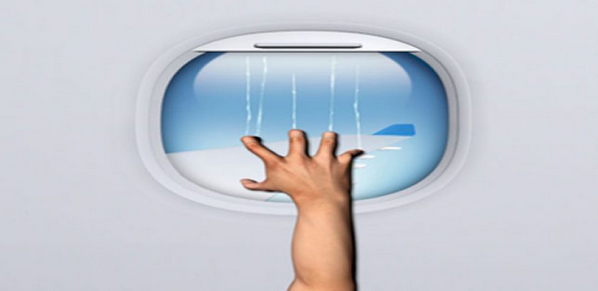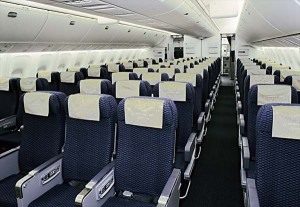
NBA rookie Royce White disclosed that he is afraid to fly and said he expects to travel by bus to play in at least some of the basketball games for his team, the Houston Rockets.
But psychologists who treat fear of flying and travelers who’ve overcome it hope he’ll ditch the bus and get help instead.
“The treatments we have for this are so effective for fear of flying that upwards of 80 percent and sometimes even more people who get the treatment can fly,” said psychologist Todd Farchione, of Boston University’s Center for Anxiety and Related Disorders, echoing statistics offered by other experts.
Farchione says fear of flying treatment consists of a “fairly standard” combination of cognitive and behavioral therapy. That includes identifying the patient’s “fear-provoking thoughts” and challenging them, then getting the patient to “gradually confront” the fear, by imagining flying and then doing it. Some programs use flight simulators or virtual reality programs; others put patients on airplanes on the ground and in the air, accompanied by counselors.
Either way, “the core of treatment is exposure” to the sensations of flying, said psychologist John Hart, who treats fear of flying at the Menninger Clinic in Houston, where patients can use a flight simulator that “has noise and shakes your chair.”
“It’s like the cockpit of a plane, with video screens that look like windows and show the ground and various airports,” Hart says. “It vibrates, bounces, takes off and lands and has different kinds of weather.”
Lisa Fabrega, a detox and lifestyle coach who lives in North Bergen, N.J., was cured by a Freedom to Fly workshop at White Plains Hospital’s Anxiety & Phobia Treatment Center in White Plains, N.Y. The program included sitting in a plane on the ground at a small airport and meeting a retired American Airlines captain.
“We got to bombard him with our most paranoid questions,” Fabrega said.
Before she took the class, she said, “even thinking about getting on a plane would make me break into a sweat.” She learned to visualize herself on a plane and deal with her feelings.
The White Plains program also encourages various types of exposure therapy, like riding a Ferris wheel, the Empire State Building’s SkyRide attraction or the aerial tramway over the East River from Manhattan to Roosevelt Island. The final session is a commercial flight to a nearby city and back. The program costs about $1,500 but is often covered by insurance for outpatient therapy.
Fabrega said half her family is from Panama and she was missing weddings and other events because she was afraid to fly. If she did fly, she said, “I had to be knocked out with Xanax.”
Now she routinely flies, drug-free, around the world.
Hart, of the Menninger Clinic, says medicating yourself with Xanax, used to treat anxiety and panic disorders, is a bad idea for phobic fliers because it “can actually interfere with the process” of coping with anxiety. The Menninger program consists of a one-day workshop followed by up to six months of exposure therapy and counseling that includes helping people with coping skills and changing their beliefs about air travel and using statistics and safety information with pilots going over how planes are built and flown.
Experts say many of those who fear flying have underlying fears of heights or claustrophobia. Some sufferers trace their fears to a stormy flight or other bad experience, but many don’t know why they’re afraid. Some experts say anxiety may run in families; others say some people are sensitive to turbulence, perhaps because of differences in the vestibular system, which controls balance.
While some patients worry about crashing, others fear nausea, vomiting or even heart attacks. They feel trapped on planes, fear “loss of control” and have “anxiety about their anxiety,” said Farchione, whose approach to treating flight phobia was featured on the PBS show “This Emotional Life.”
Hart says the sufferers don’t like it when the plane door closes and the cabin is pressurized.
“It’s not like a car: You can’t stop and get out,” Hart explained.
Challenging fearful thoughts is key.
“How likely is the plane going to crash? It’s much safer than driving or taking the bus,” said Farchione. And when symptoms of anxiety begin, patients are taught that it may feel frightening, “but you’re not going to die. The plane is not crashing.”
Farchione noted that White is not the only sports figure to go public with flight phobia. Retired NFL coach and sports commentator John Madden famously traveled by bus, his customized Madden Cruiser, to avoid planes.
At the Virtual Reality Medical Center, which has offices in Los Angeles and Brussels and has treated more than 1,000 people in 15 years, patients don headsets and sensors and are immersed in a 360-degree, three-dimensional visual and auditory computer simulation of air travel, from packing to security to boarding and taking flight. The software simulates night or day, various weather conditions and turbulence. The immersion is paired with sensors that measure breathing, heart and perspiration rates so patients can learn to recognize and handle symptoms of anxiety. The treatment costs about $2,000 and takes eight to 10 sessions.
Physician Mark Wiederhold, who runs Virtual Reality with his wife, Brenda, says for most people the anxiety will never completely vanish, “but you can learn to cope with it.”
John E. DiScala, better known as the travel writer and blogger Johnny Jet, flies constantly, but as a 17-year-old, he had an anxiety attack before boarding a plane for a trip to Australia with his mom and didn’t fly for three years. As an asthma sufferer, he says, “my fear was not being in control. What will happen if I have an asthma attack in the air?”
A few years later, someone gave him a ticket to visit a friend in Tucson, Ariz. Emboldened by a positive horoscope, he decided to “give it a shot” and got through that flight and a second one to Los Angeles for a family funeral.
“I got over my fear of flying, but I’m always aware of that anxiety, even though I fly more than 150,000 miles a year,” he said. “If I can do it, anybody can do it.”
For Caitlin Condon, who works in tech communications in Cambridge, Mass., information was key in coping with flight phobia.
“Planes are this crazy magical thing,” she said. “You’re flying 500 mph in a pressurized tube, seven miles above the earth.”
She did a lot of research online, using sites like Flyingwithoutfear.com and threads about air travel on the knowledge-sharing site Quora. Now she can get on a plane whenever she wants.
“Flying,” she said, “is the safest way to travel except for elevators.”
This article originally was published in foxnews.


